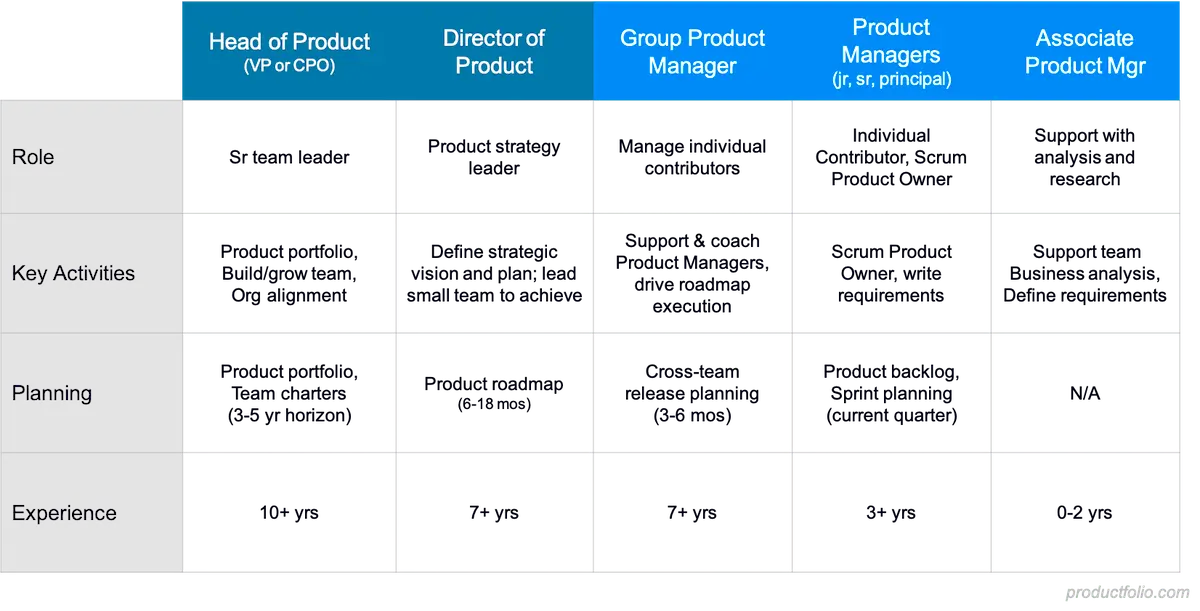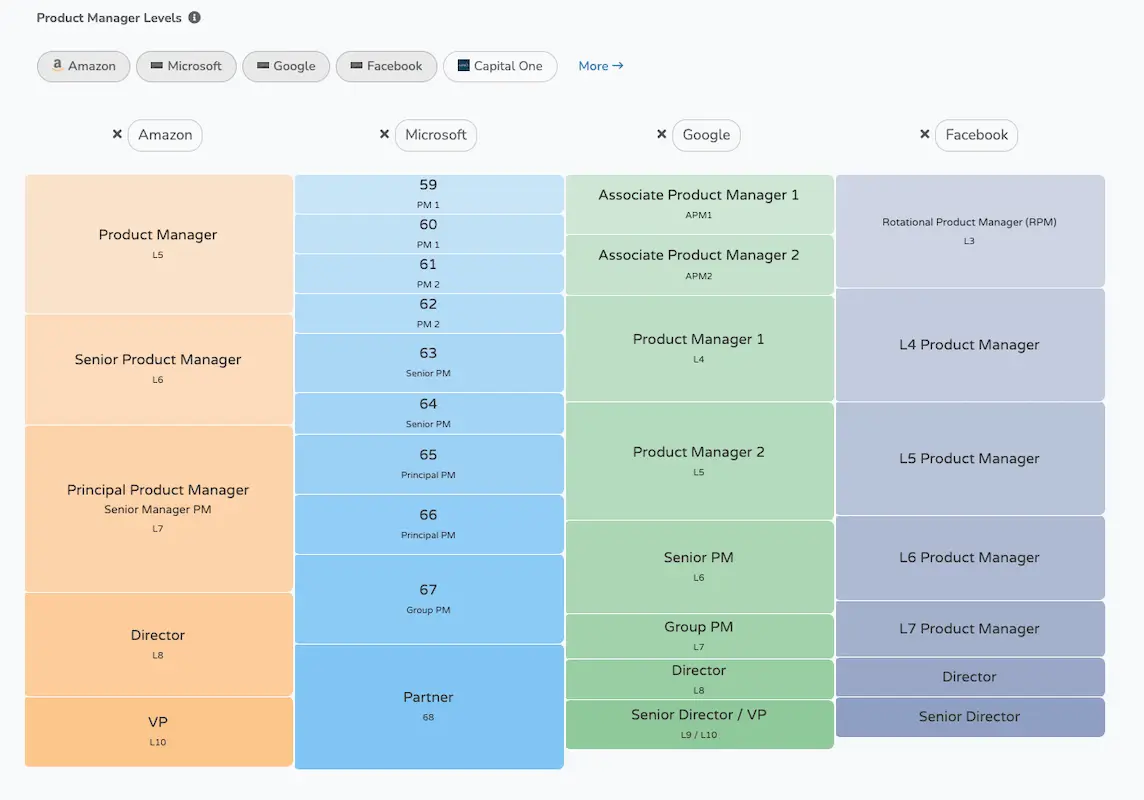Product management job titles are not always straightforward, but when trying to decide what might be the next step in your PM career, or when applying to jobs, it’s crucial to know what’s behind each of them.
The principal product manager title is one that tends to attract attention: it sounds important and has an air of assured authority. But what does it stand for, exactly?
Read on to learn more:
- What is a principal product manager?
- What does a principal product manager do?
- What is the average principal product manager salary?
- How to become a principal product manager
- Principal product manager FAQs
- Final thoughts
1. What is a principal product manager?
Taking it straight from the Playbook of Product Careers (fictional title), a principal product manager is someone who’s had quite a few years of professional product experience under their belt (typically at least 8-10 years).
During that time, they’ve accumulated enough breadth and depth of experience to make them feel comfortable using most tools product managers are expected to master at any given moment, and they can rely on experience when it comes to tackling the usual dilemmas facing them in daily life.
In the best case scenario, a principal product manager might have seen their career grow alongside their product’s success. If there’s one person who is the best informed about all aspects concerning a particular product, it should be the principal product manager. Think of them as the primary custodians of their product.
Typically, the figure of the principal product manager is usually found at larger organizations, or organizations with a large product department.
Principal product managers typically work with well-established products, products which are mature enough to warrant more than one PM working on them.
2. What does a principal product manager do?
Another way of understanding this role is by looking at what kind of things are expected of them in their day-to-day job. Let’s go through a few of them now.
Principal product manager tasks
It might be useful to state this upfront: the principal product manager (PPM) lives at the highest rank of the Individual Contributor (IC) scale.
What does this mean? Because they’re very senior contributors to the growth and life of a given product, PPMs don’t have line management responsibilities.
While they might provide feedback to PMs, or even be in charge of onboarding or coaching them, they aren’t anyone’s manager. This sets them apart from Group Product Managers (GPMs), who, being equally senior in terms of product management proficiency, have chosen a management track and do have direct reports and line management responsibilities.
So, what are the tasks a principal product manager might be reasonably expected to perform? Here are two big ones:
- Onboard or even coach entry-level product managers
- Work closely with tech leads or heads of growth and design to ensure complete alignment between business goals and development work
As Malte Scholz, CPO of Airfocus explains:
You could say that a PPM acts like the glue between the development teams, the stakeholders, and the customers.
Principal product manager skills
While many of the skills mentioned here are generally useful for anyone working in product management, principal product managers will find the following particularly relevant:
- Data-based decision making (this includes ruthless prioritization)
- Product Strategy and Roadmapping
- Stakeholder management
3. What is the average principal product manager salary?
In Canada, the salary range is between CA$152–273,000 total annual compensation, according to Glassdoor. The base pay is typically CA$157,181, with an additional $39,062 of additional pay.
In Germany, principal product managers can expect compensation in the range of €101–146,000 per year. The average base pay would be €106,172, and additional compensation would amount to €14,512.
Principal product managers in the U.K. get anywhere between £74–142,000/year, which is a rather broad pay range. Average base pay is £94, 839 and average additional compensation amounts to £16,166.
Finally, in the U.S., principal product managers make between $180-287,000/year total compensation, of which an average of $155,827 would be base pay and $69,569 would be additional pay.
4. How to become a principal product manager
There are several ways of landing a PPM position, but by far the one requiring the least amount of explicit effort is to grow your current product management role.
If you’re the first PM hired into a product team and you’re in charge of growing an early stage product, your best chance of progression into a PPM role is tied to the success of your product.
As the team grows, your organization might need to look at different ways to split work: this is typically where squads or product trios might be given a go.
And as organizational complexity increases, so does the need for someone to have a deep, overarching understanding of the product. It’s typically around that time that the need for a principal product manager arises.
5. Principal product manager FAQs
What level is a principal product manager?
Different companies will assign different levels to their PPMs. And some companies will have lead product managers instead of PPMs, which is the closest comparable job title. Portfolio did a good job at summarizing what can be expected at each stage of a product manager’s career:

From this table, it is apparent that regardless of the particular levels any given organization might have in place, the principal product manager position is a mid-level one, requiring years of experience.
What comes after principal product manager?
The short answer: it depends both on your ambitions and on the org chart of your place of work. Let’s look at a snapshot of some high tech companies from the salary insight tool Levels.fyi:

As it is clear from this picture, companies can and do organize themselves in extremely different ways.
- At Amazon, a Principal Product Manager is squarely in the middle of the ladder, with Product Director being the next level to attain
- At Microsoft, the product management ladder comes with considerably more steps, and the following step after PPM is Group Product Manager
- Google and Meta don’t use the designation of PPM at all (which is not to say it does not exist, it might simply have a different name)
Principal product manager vs senior product manager: What’s the difference?
A senior product manager is typically one level below a PPM or a GPM.
As a senior PM, the choice of whether to stay on the IC track or attempt a leap into management is still an open question. If you find yourself in this position and see the leeway to move up a ladder, you essentially need to decide on what to invest your time and energy on.
Do you feel your talents would be best put to use by continuing to hone your product discovery and product development abilities? If so, the IC track might be the most appropriate for you.
Have you had your share of “doing”, and think the next logical step might be teaching and guiding others on how to do product management the right way? Then the management track might be what you are looking for.
6. Final thoughts
Product management careers are not necessarily linear nor easy to understand. While progression is definitely possible, there is an ongoing debate about what progression even means, or should mean.
Principal product managers are the perfect example of how the tech industry is creating dual career paths: they’re at the very top of the Individual Contributor path and, as experienced product professionals, their skills are in high demand.
Get started in this exciting area with CareerFoundry’s free product management short course. It’s a great way to dip your toe in the area to see if it’s for you.
Otherwise, learn more about the career path in these guides:
